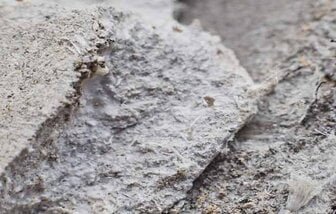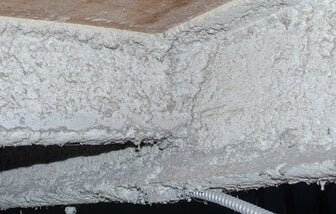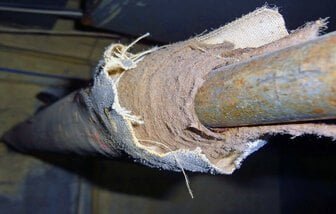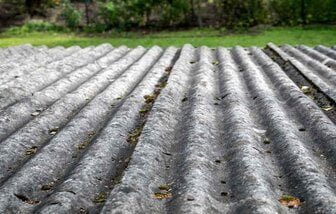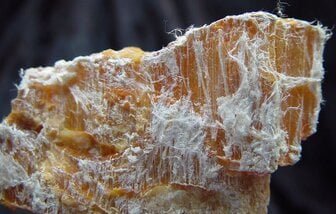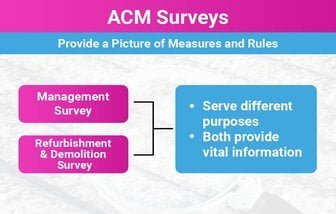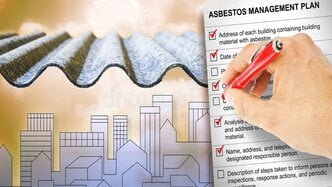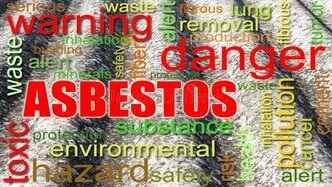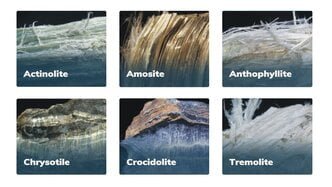Understanding Asbestos: Its Presence and Dangers in the UK
Asbestos is a naturally occurring fibrous mineral extensively used in various industries for its durability and heat resistance. Despite its widespread use in building materials, asbestos poses severe health risks, such as lung cancer and mesothelioma, when its fibers are inhaled. The UK has implemented stringent regulations to control asbestos use and ensure safe management. Professional inspections and removal are crucial to prevent exposure, especially in older buildings where asbestos is still present. Learn about the types of asbestos, their applications, and the importance of proper asbestos management.
What is Asbestos?
Asbestos is a naturally occurring fibrous mineral that has been extensively utilised in various industries and construction due to its remarkable durability, heat resistance, and insulating properties. Composed of thin, needle-like fibers, asbestos can become a significant health hazard when its particles are airborne and inhaled.
There are six primary types of asbestos: chrysotile, amosite, crocidolite, tremolite, actinolite, and anthophyllite. Each type has unique physical and chemical characteristics that made asbestos a versatile material in the past.
Chrysotile, also known as white asbestos, is the most common type and was widely used in building materials such as insulation, roofing, and flooring. Its curly fibers and layered structure contribute to its flexibility and resistance to heat.
Amosite, or brown asbestos, is known for its excellent tensile strength and was commonly used in cement sheets and pipe insulation. Crocidolite, or blue asbestos, has thin, brittle fibers and was predominantly utilised in specialized high-temperature applications due to its superior thermal resistance.
Lesser-known types like tremolite, actinolite, and anthophyllite were less frequently used commercially but can still be found as contaminants in other asbestos-containing materials.
Tremolite and actinolite have similar physical properties, being naturally occurring minerals found in metamorphic rocks. Anthophyllite, on the other hand, is recognized for its fibrous form and has historically been used in some composite materials.
Asbestos’s popularity surged during the 19th and 20th centuries, particularly in the UK, where it became a staple in construction and various industries.
Its widespread use was largely due to its exceptional properties, which provided solutions to industrial challenges of the time. However, as the health risks associated with asbestos exposure, such as lung cancer and mesothelioma, became evident, significant legislative changes were implemented.
In the UK, the Asbestos Regulations of 1985 marked a pivotal point, introducing stringent controls on the use and handling of asbestos. Subsequent regulations, like the Control of Asbestos Regulations 2012, further enforced safe practices and prohibited the use of asbestos in construction and manufacturing.
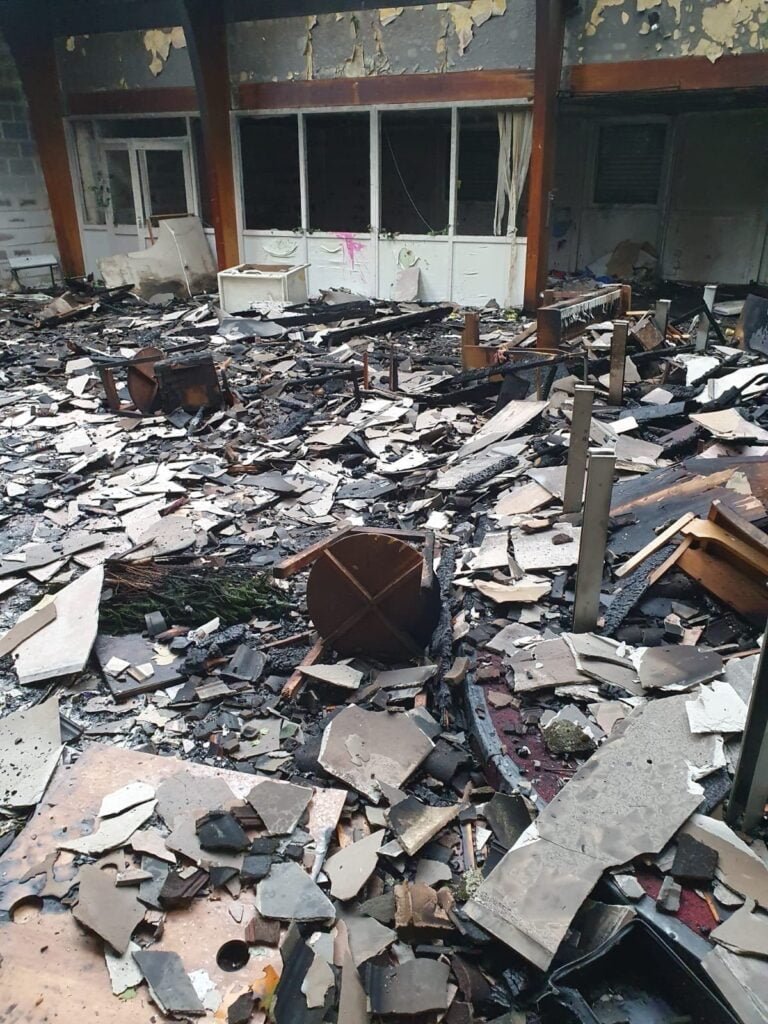
Understanding Asbestos
Asbestos is a group of six naturally occurring fibrous minerals: chrysotile, amosite, crocidolite, tremolite, anthophyllite, and actinolite. These minerals have been widely used in construction materials, automotive parts, textiles, and other products due to their heat resistance and insulating properties.
Health Hazards of Asbestos Exposure
When asbestos-containing materials are disturbed or damaged, microscopic fibers are released into the air. Inhalation of these fibers is the primary route of exposure, leading to a range of serious health conditions.
1. Asbestosis
Asbestosis is a chronic lung disease caused by long-term exposure to asbestos fibers. Over time, these fibers can cause scarring and inflammation in the lungs, leading to breathing difficulties, coughing, and in severe cases, respiratory failure.
2. Lung Cancer
Exposure to asbestos is a known cause of lung cancer. The risk of developing lung cancer is significantly increased in individuals who have been exposed to asbestos, especially if they are also smokers.
3. Mesothelioma
Mesothelioma is a rare and aggressive form of cancer that primarily affects the lining of the lungs, abdomen, or heart. It is almost exclusively caused by asbestos exposure, and the latency period between exposure and diagnosis can be several decades.
4. Other Cancers
Aside from lung cancer and mesothelioma, asbestos exposure has also been linked to an increased risk of other cancers, including ovarian, laryngeal, and gastrointestinal cancers.
5. Non-Cancerous Health Effects
Exposure to asbestos can also lead to non-cancerous health effects, such as pleural plaques (thickened areas on the lining of the lungs), pleural effusions (abnormal fluid buildup in the lungs), and pleural thickening (scarring of the lung lining).
Recognising the dangers of asbestos, many countries have implemented regulations to limit or ban its use. Proper handling, removal, and disposal of asbestos-containing materials are essential to prevent exposure.
1. Asbestos Testing
If you suspect the presence of asbestos in your home or workplace, it is crucial to have a professional asbestos testing and inspection conducted. This will determine the presence and condition of asbestos-containing materials.
2. Asbestos Removal
If asbestos-containing materials are found, it is recommended to hire a licensed asbestos removal professional to safely remove and dispose of the materials. Improper removal can release more fibers into the air, increasing the risk of exposure.
3. Protective Measures
For individuals working in industries where asbestos exposure is a risk, proper protective measures should be implemented. This includes wearing appropriate personal protective equipment, following safe work practices, and regular health monitoring.
1. Understand the Risks
Asbestos exposure can have serious health implications, including the development of diseases such as asbestosis, lung cancer, and mesothelioma. These conditions can take years or even decades to develop, so it is crucial to be aware of the risks and take necessary precautions.
2. Consult a Medical Professional
If you suspect that you have been exposed to asbestos, it is imperative to consult a medical professional who specializes in asbestos-related diseases. They will be able to assess your situation, conduct any necessary tests, and provide you with appropriate advice and treatment options.
3. Gather Information
Try to gather as much information as possible about the circumstances of your asbestos exposure. This may include the location, duration, and nature of the exposure. If you were exposed at work, make a note of the employer, job title, and dates of employment. This information will be valuable when seeking compensation or legal assistance.
4. Notify Relevant Authorities
If the exposure occurred in a workplace, it is important to report it to the Health and Safety Executive (HSE) in the UK. The HSE is responsible for enforcing health and safety regulations in the workplace and can provide guidance on how to manage the situation.
5. Inform Your Doctor
Make sure to inform your doctor about your asbestos exposure, even if you are not experiencing any symptoms at present. This will help them monitor your health over time and take appropriate measures if any asbestos-related diseases develop.
6. Seek Legal Advice
If you believe your exposure to asbestos was due to negligence or inadequate safety measures, you may be entitled to compensation. It is advisable to consult a solicitor who specializes in asbestos-related claims to explore your legal options.
7. Take Precautions
If you are still working in an environment where asbestos is present, take necessary precautions to minimize your exposure. Follow all safety protocols, wear appropriate protective gear, and ensure that your employer is taking the necessary steps to protect your health.
8. Support and Resources
There are various support groups and resources available for individuals who have been exposed to asbestos. These organizations can provide valuable information, advice, and emotional support to help you navigate through the challenges associated with asbestos-related diseases.
Conclusion
If you suspect you have been exposed to asbestos in the UK, it is crucial to take immediate action to protect your health and seek appropriate medical advice. Understanding the risks, consulting a medical professional, gathering information, notifying relevant authorities, and seeking legal advice are important steps to take. By being proactive and taking necessary precautions, you can mitigate the potential health risks associated with asbestos exposure.
Types of Asbestos-Related Diseases
Asbestos exposure can cause several diseases, including:
- Asbestosis: This chronic lung disease occurs due to the inhalation of asbestos fibers. Symptoms may include shortness of breath, persistent cough, chest pain, and fatigue.
- Lung Cancer: Asbestos exposure is a known risk factor for lung cancer. Symptoms may include coughing, wheezing, chest pain, weight loss, and difficulty breathing.
- Mesothelioma: This rare and aggressive cancer affects the lining of the lungs, heart, or abdomen. Symptoms may include chest pain, shortness of breath, cough, fatigue, and unexplained weight loss.
Symptoms of Asbestos-Related Diseases
The symptoms of asbestos-related diseases can vary depending on the specific condition and the stage of the disease. It is important to note that these symptoms may not appear until several years or even decades after the initial asbestos exposure. Some common symptoms include:
- Respiratory Issues: Persistent cough, wheezing, and shortness of breath are common symptoms of asbestos-related lung diseases.
- Chest Pain: Asbestos-related diseases can cause chest pain or tightness, which may be accompanied by difficulty breathing.
- Fatigue: Feeling excessively tired or lacking energy can be a symptom of asbestos-related diseases.
- Unexplained Weight Loss: Sudden and unintentional weight loss can be a sign of advanced asbestos-related diseases.
- Coughing up Blood: Coughing up blood or experiencing blood in phlegm may indicate a more advanced stage of asbestos-related lung diseases.
Importance of Early Detection
Early detection of asbestos-related diseases is crucial for effective treatment and improved prognosis. If you have a history of asbestos exposure, it is important to monitor your health and be aware of any potential symptoms. Regular check-ups and screenings can help identify any abnormalities at an early stage, allowing for timely intervention.
If you experience any of the symptoms mentioned above or have concerns about asbestos exposure, it is recommended to consult a healthcare professional. They can evaluate your medical history, conduct necessary tests, and provide appropriate guidance.
Asbestos Millboard
Millboards manufactured between 1896 and 1965 can contain chrysotile asbestos (up to 97%). Often found in: Pipe runs, electrical gear, vaults, storage. Often used for: Fire protection on structural
Asbestos Cement
Generally containing 10-15% asbestos fibres which are bound in Portland cement or calcium silicate. Uncoated sheets, widely used in the past as a building material can be identified as light grey in
Asbestos Sprayed Coatings
Asbestos sprayed coatings have been widely used in the construction industry in the past, particularly in the United Kingdom
Asbestos Tiles
Learn about asbestos floor tiles in the UK, including their identification, dangers, and management. Find out how to identify asbestos floor tiles
Asbestos Lagging, Ropes & Yarns
Asbestos lagging and ropes were once widely used for their insulation properties. However, due to the health risks associated with asbestos exposure, their use has been banned in many countries.
Asbestos Textured Coatings
Asbestos textured coatings, also known as Artex or similar products, were widely used in the construction industry in the UK from the 1960s to the 1990s. These coatings were applied to ceilings
Corrugated Asbestos Panels
When it comes to garage roofing in the UK, one type of material that was widely used in the past is corrugated asbestos panels. However ue to health and safety concerns, the use of asbestos has been banned
Crocidolite Asbestos
Learn about crocidolite asbestos, a highly hazardous form of asbestos that was widely used in various industries. Discover its properties, health risks, and the importance of professional testing and removal.
Amosite Asbestos
Amosite asbestos, also known as brown asbestos, is a type of asbestos mineral that was widely used in various industries for its heat resistance and insulating properties.
Chrysotile Asbestos
Learn about chrysotile asbestos, its applications, and the potential health risks associated with exposure. Understand the importance of safety measures and regulations to prevent asbestos
Asbestos Surveys
We are able to provide any level of survey required, up to the Demolition and Refurbishment survey now required prior to the demolition of any building or structure.
What is Asbestos?
Asbestos was commonly used as a construction material in the UK between the 1950s and 1980s in particular. If your home was built between these years, chances are that you are living with Asbestos
Asbestos Management Plan
An asbestos management plan is essential for managing asbestos-containing materials (ACMs) in buildings. It aims to protect occupants and workers from asbestos exposure through identification, assessment, and control of ACMs.
Asbestos Dangers
Learn about the dangers of asbestos, its health risks including mesothelioma and lung cancer, and how to protect yourself from exposure. Understand the regulations and laws regarding asbestos, and find resources and support for asbestos-related issues.
Types Of Asbestos
Learn about the different types of asbestos, including chrysotile asbestos, amphibole asbestos, tremolite asbestos, and anthophyllite asbestos. Understand the characteristics and health risks associated with each type of asbestos.
How To Manage Asbestos
Dealing with asbestos requires caution and adherence to proper safety procedures. Identifying asbestos and taking appropriate action is crucial to protect the health and well-being of individuals. If you suspect the presence of asbestos.
Ready to start your project?
Committed to Excellence on all levels
Let's Work Together
Please complete the form below and someone from the Total team will be in touch to discuss your asbestos requirements For urgent needs, our customer support team is available through various channels. You can reach us via phone during business hours, or through our dedicated email support. We are committed to providing timely assistance and ensuring your asbestos concerns are addressed promptly and professionally.


